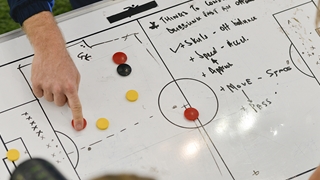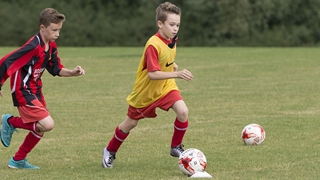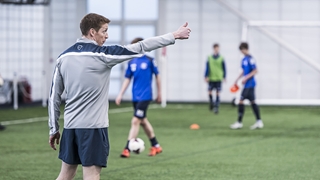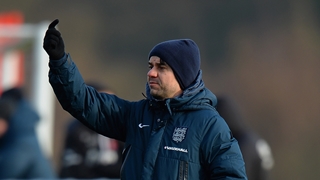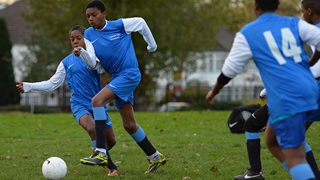
England U16 head coach, Dan Micciche, outlines five examples of creative team and player challenges that can be used at all levels of the game.
1) “Minimum of” rather than “maximum of”
Instead of asking players to play with a maximum of two touches challenge the players to play with a minimum of five touches. Pick one player from each team to attempt the challenge for five minutes and then swap the challenge to two different players. By using a minimum of five touches it will help players understand what it feels like to stay on the ball and play in less of rush. All the players in the group should have an opportunity to experience the challenge.

Of course there are times when the players need to play one and two touch - that’s why the challenges should only last for small bursts of time. Also it is important to remember that just because you’ve taken the challenge off them doesn’t mean that they won’t be doing it any more.
2) Silent football
If you want to develop young players’ communication skills you might set up a session where only two players can talk. Select two players who need to work on their communication skills and give them the responsibility for all verbal communication for five minutes of the practice. The other players who are working in silence will be challenged to play with their head-up and develop their awareness. After five minutes you can swap the players and challenge another pair.
3) No bibs
Asking players to play a game without using bibs is another interesting way to help develop awareness and communication. Key to this is giving the players time to become familiar with the players on their team. This can be done by giving the players a few minutes as a group before the game starts. After that there are no bibs and the group has to work out who is on their team.
4) Manufacture tactics and formation to achieve your outcomes
How you set up your team and the formation you pick can help manufacture certain situations that will challenge your players. For example, if you want your back four to get better at 1v1 defending then experiment with leaving your front players – for example numbers 7, 9, 11 - high up the pitch rather than tracking back when your team is defending. The other players will be working on 1v1 defending without even knowing.
5) Free-kicks and goals against
At many levels of the game players are still applauded for kicking the ball off the pitch when clearing or tackling. To encourage players to keep the ball on the pitch and win the ball cleanly when challenging, experiment with awarding free-kicks against the team that kicks the ball off the pitch when they could have stayed in possession.
The idea can be extended to awarding the opposition a goal if the team in possession kick the ball of the pitch without any thought. This will require a strong relationship between the coach and the players and all decisions should be explained to the players. The players will soon pick it up and you will see the benefit in their play as they try and stay on the ball.


